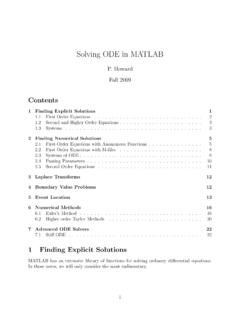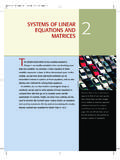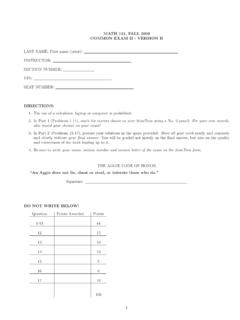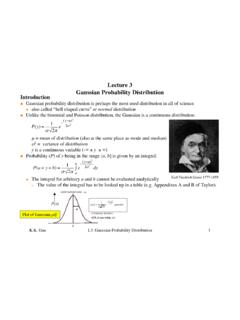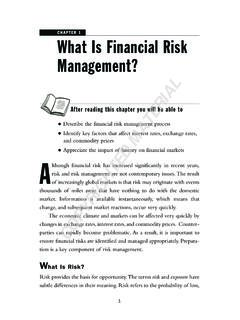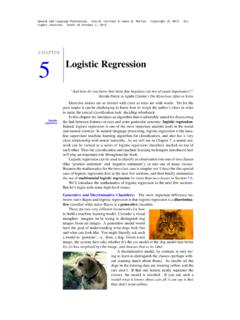Transcription of Sets and Probability - Texas A&M University
1 CHAPTER1 Sets and ProbabilityIn a survey of 200 people that had just returnedfrom a trip to Europe, the following informa-tion was gathered. 142 visited England 95 visited Italy 65 visited Germany 70 visited both England and Italy 50 visited both England and Germany 30 visited both Italy and Germany 20 visited all three of these countriesHow many went to England but not Italy orGermany?We will learn how to solve puzzles like this inthe second section of the chapter when count-ing the elements in a set is from Applied Finite Mathematics by Tomastik and Epstein (c) 2008 Cengage to Introduction to SetsThis section discusses operations on sets and the laws governing these set opera-tions.
2 These are fundamental notions that will be used throughout the remainderof this text. In the next two chapters we will see that Probability and statistics arebased on counting the elements in sets and manipulating set operations. Thus wefirst need to understand clearly the notion of sets and their operations. The Language of SetsWe begin here with some definitions of the language and notation used whenworking with sets. The most basic definition is What is a set? Asetis acollection of items. These items are referred to as theelementsormembersofthe set.
3 For example, the set containing the numbers 1, 2, and 3 would be written{1,2,3}. Notice that the set is contained in curly brackets. This will help usdistinguish sets from other mathematical all the elements of the set are written out, we refer to this asrosternotation. So the set containing the first 10 letters in the English alphabet wouldbe written as{a,b,c,d,e,f,g,h,i,j}in roster notation. If we wanted to refer tothis set without writing all the elements, we could define the set in terms of itsproperties. This is calledset-builder notation. So we write{x|xis one of the first 10 letters in the English alphabet}This is read the set of allxsuch thatxis one of the first 10 letters in the Englishalphabet.
4 If we will be using a set more than once in a discussion, it is useful todefine the set with a symbol, usually an uppercase letter. SoHISTORICAL NOTEG eorge Boole, 1815 1864 George Boole was born into alower-class family in Lincoln,England, and had only a commonschool education. He was largelyself-taught and managed tobecome an elementary schoolteacher. Up to this time any rule ofalgebra such asa(x+y)=ax+aywas understood to apply only tonumbers and magnitudes. Booledeveloped an algebra of setswhere the elements of the setscould be not just numbers butanything.
5 This then laid down thefoundations for a fundamental wayof thinking. Bertrand Russell, agreat mathematician andphilosopher of the 20th century,said that the greatest discovery ofthe 19th century was the nature ofpure mathematics, which heasserted was discovered byGeorge Boole. Boole s pamphlet The Mathematical Analysis ofLogic maintained that theessential character of mathematicslies in its form rather than in itscontent. Thus mathematics is notmerely the science ofmeasurement and number but anystudy consisting of symbols andprecise rules of operation. Boolefounded not only a new algebra ofsets but also a formal logic that wewill discuss in chapter {a,b,c,d,e,f,g,h,i,j}We can saycis an element of the set{a,b,c,d,e,f,g,h,i,j}or simply writec S.
6 The symbol is read is an element of . We can also say that the setR={c}is a subset of our larger setSas every element in the setRis also in every element of a setAis also an element of another setB, we say thatAis asubsetofBand writeA not a subset ofB, we writeA {1,2,4} {1,2,3,4},but{1,2,3,4} {1,2,4}. Since every element inAis inA, we can writeA A. If there is a setBand every element in the setBisalso in the setAbutB =A, we say thatBis aproper subsetofA. This is writtenasB A. Note the proper subset symbol is lacking the small horizontal linethat the subset symbol has.
7 The difference is rather like the difference between<and .Some sets have no elements at all. We need some notation for this, simplyleaving a blank space will not do!Exerpt from Applied Finite Mathematics by Tomastik and Epstein (c) 2008 Cengage Learning14 chapter 1 Sets and ProbabilityEmpty SetTheempty set, written as /0or{}, is the set with no empty set can be used to conveniently indicate that an equation has nosolution. For example{x|xis real andx2= 1}=/0By the definition of subset, given any setA, we must have /0 1 Finding SubsetsFind all the subsets of{a,b,c}.
8 SolutionThe subsets are/0,{a},{b},{c},{a,b},{a,c},{b,c},{a,b ,c} REMARK:Note that there are 8 subsets and 7 of them are proper subsets. Ingeneral, a set withnelements will have 2nsubsets. In the next chapter we willlearn why this is empty set is the set with no elements. At the other extreme is theuni-versal set. This set is the set of all elements being considered and is denoted byU. If, for example, we are to take a national survey of voter satisfaction with thepresident, the universal set is the set of all voters in this country. If the surveyis to determine the effects of smoking on pregnant women, the universal set isthe set of all pregnant women.
9 The context of the problem under discussion willdetermine the universal set for that problem. The universal set must contain everyelement under diagramis a way of visualizing sets. The universal set is representedFigure a rectangle and sets are represented as circles inside the universal set. Forexample, given a universal setUand a setA, Figure is a Venn diagram thatvisualizes the concept thatA U. Figure also visualizes the conceptB the rectangle will be dropped in later diagrams as we will abide bythe convention that the rectangle always represents the universal set.
10 Set OperationsThe first set operation we consider is the complement. The complement of setAare those members of setUthat donotbelong a universal setUand a setA U, thecomplement ofA, writtenAc,is the set of all elements that are inUbut not inA, that is,Ac={x|x U,x/ A}Exerpt from Applied Finite Mathematics by Tomastik and Epstein (c) 2008 Cengage to Sets15A Venn diagram visualizingAcis shown in Figure Some alternate nota-tions for the complement of a set areA and 2 The Complements of SetsLetU={1,2,3,4,5,6,7,8,9},A={1,3,5,7, 9},B={1,2,3,4,5}. FindAc,Bc,Uc,/0c, and(Ac)cin h aveAc={2,4,6,8}Bc={6,7,8,9}Uc=/0/0c={1,2 ,3,4,5,6,7,8,9}=U(Ac)c={2,4,6,8}c={1,3,5 ,7,9}=A Note that in the example above we foundUc=/0 and /0c=U.


